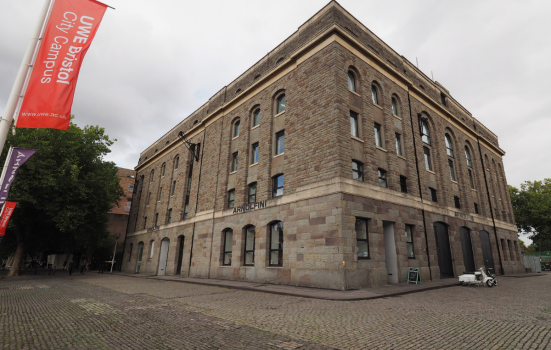
Arnolfini in Bristol left the portfolio in 2018, but remained open and re-joined for 2023-2026
Photo: claudiodivizia via iStock
Nearly 50 former NPOs have closed since 2018
Research by third-sector financial benchmarkers MyCake has analysed the longevity and turnover of arts organisations that exit Arts Council England's national Funding Portfolio.
A total of 47 arts and culture organisations that left the Arts Council England's (ACE) National Portfolio since 2011 have closed down in the last six years, analysis has found.
Research by third-sector financial benchmarkers MyCake shared on Twitter/X looked into the financial performance of organisations that had been in ACE’s portfolio at some point from 2011 onwards but are not any longer.
Of the 47 former NPOs that closed in the last six years, 15 closed in 2018, 12 in 2019, six in 2020, three in 2021, seven in 2022 and four in 2023.
READ MORE:
- Rising number of unsuccessful NPO applicants shutting down
- Further closures of unsuccessful NPO applicants
In November, Arts Professional reported that 14 organisations that failed to secure NPO funding from ACE for the 2023-26 investment period, announced in November 2022, had either closed or announced plans to close. Other organisations that lost their portfolio status have announced cutbacks and restructures.
Considering more broadly how former NPOs that left the portfolio between 2011 and 2023 have fared, MyCake posted on Twitter/X that "in general, about [one third] of orgs close fairly shortly after leaving the portfolio, about [one third] stay roughly the same in terms of turnover and about [one third] drop in size fairly substantially,”
MyCake’s analysis also looked at the financial turnover of the former NPOs.
In 2018, 106 former NPOs recorded a combined turnover of £62.9m. Turnover increased to £66.6m across 99 organisations in 2019 and fell to £64m across 93 companies in 2020.
There was a sharp decrease in turnover in 2021 when 91 former NPOs recorded £52.9m. In 2022, 85 former NPOs had a total turnover of £57.9m.
MyCake’s analysis on Twitter/X reads: “Note the dip in income in 2021. If we looked at NPOs, we would see a rise. My best guess is that ex NPOs didn't fare as well from grant-funding during Covid and saw a drop in earned income. More work needed to confirm that”.
'If we don’t look, we’ll never know'
Discussing the figures, MyCake Founder Sarah Thelwall cautioned that during the 2018-2023 period, external influences such as the pandemic and the cost-of-living crisis have to be considered. She also noted that there is no published list of which organisations leave the portfolio or why.
Thelwall said: “It would be unwise to infer causality without more robust analysis than we’ve done to date, but we do think that there are lessons to be learnt from the data on organisations after they leave a long-term funding arrangement or multi-year funded project.
“We are blessed with large volumes of public and open data on the non-profit sector. The task is to work out what we want to learn from it and how can we better use data and evidence to inform strategy and policy... i.e. learning should end up in changing behaviour.
“We think there is insight to be gained from looking not just at what is funded (albeit that’s often where there is more data) but what is not funded.
“If we can better understand what happens to organisations after an unexpected shock, we can put structures in place to mitigate the risks. If we don’t look, we’ll never know what happens after a cliff edge.”
ACE response
Both Thelwall and ACE noted that there are instances where organisations leave the portfolio and then return in a later round, with examples such as Arnolfini, Red Ladder Theatre Company, Cartwheel Arts and Castlefield Gallery.
In response to the figures, an Arts Council England spokesperson said: "This time last year, we announced our biggest and most varied portfolio to date: investing over £444m a year in nearly 1,000 organisations of all sizes across all art forms, up and down the country.
"With 1,700 applications, it was our most competitive round, and with the budget available to us, we had to make difficult decisions between good applications to support all types of cultural work while making sure our public investment reached more people in more places.
"For those with changes to their funding, we made a package of support available, awarding £18.9m to over 100 organisations to help them respond to changes in levels of our investment in a measured and sustainable way.
"We will continue to do all we can to support cultural and creative organisations and to make the case for future investment so the cultural sector can continue to provide world-class creativity for communities everywhere."
Join the Discussion
You must be logged in to post a comment.